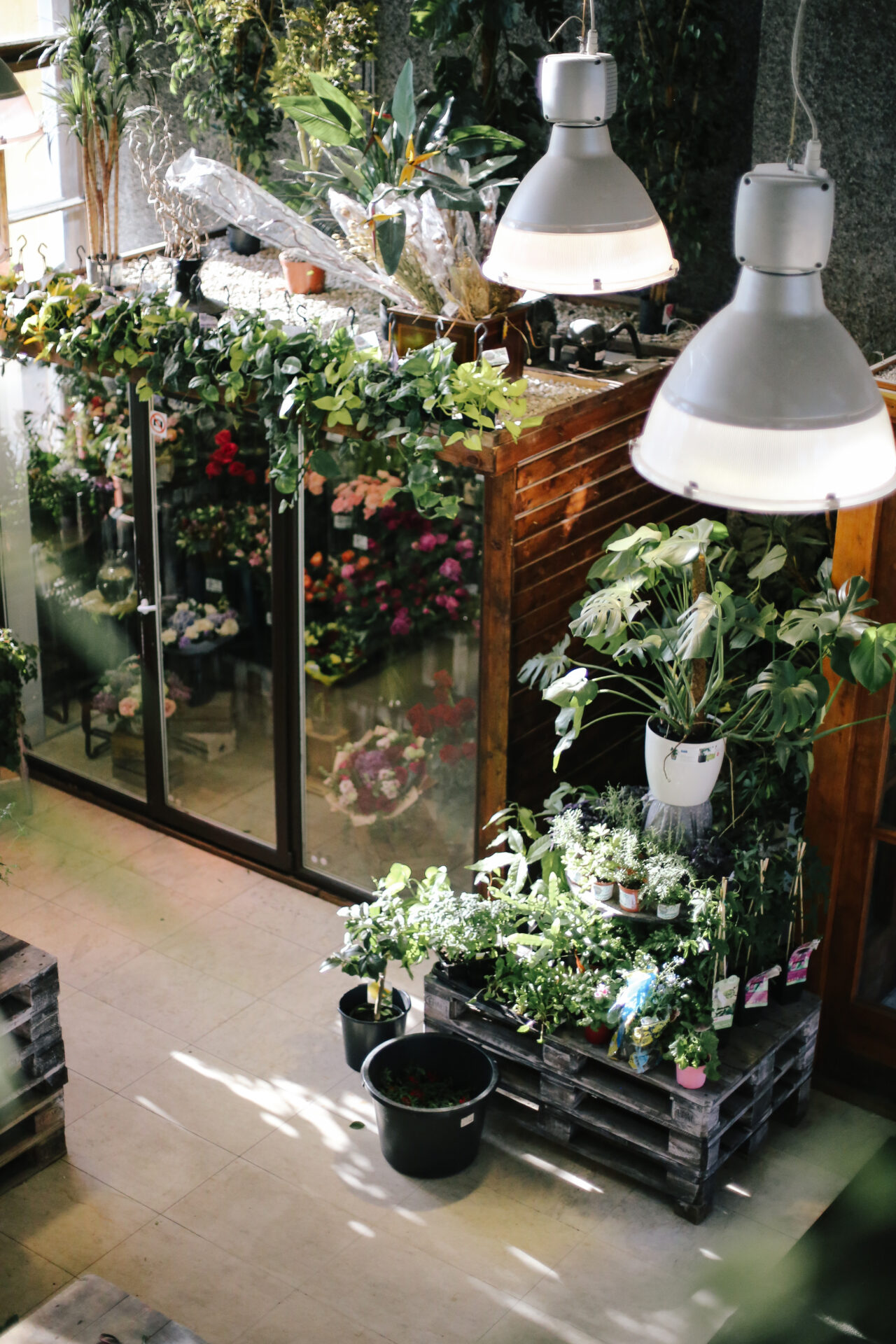Indoor vertical gardening has rapidly gained popularity among urban dwellers and green enthusiasts. It offers a space-saving, sustainable solution for growing fresh produce in the comfort of one’s home. In this article, we delve into the intricacies of maximizing yield in your indoor vertical garden by focusing on crucial aspects such as proper plant selection, optimal growing conditions, efficient use of space, and innovative techniques for boosting productivity.
Join us as we guide you through a comprehensive exploration of the various factors that contribute to the success of your vertical garden, ensuring a bountiful harvest all year round.
Utilizing Nutrient-Rich Soil Mixes and Fertilizers
To ensure your indoor vertical garden thrives and yields an abundant harvest, you must give your plants the necessary nutrients to flourish. By employing nutrient-rich soil mixes and fertilizers, you can create an optimal environment for your plants to grow strong and healthy. This section will delve into the importance of using high-quality soil and fertilizers and provide guidelines on adequately applying them to maximize your garden’s yield.
The Importance of Nutrient-Rich Soil
Healthy soil is the foundation of a successful indoor vertical garden. Choosing a high-quality, nutrient-rich soil mix can significantly improve plants’ growth and overall health. A well-balanced soil mix should contain essential nutrients, organic matter, and beneficial microorganisms to support your plants throughout their life cycle.
In an indoor vertical garden, selecting a lightweight and well-draining soil mix is imperative, as the vertical setup can sometimes hinder proper drainage. This helps prevent root rot and fungal growth, which can negatively impact your plants’ productivity.
Choosing the Right Fertilizer
In addition to providing your plants with nutrient-rich soil, fertilizers are vital in ensuring their continued growth and development. Fertilizers supply essential nutrients, such as nitrogen, phosphorus, and potassium, required for various plant functions, including photosynthesis, root development, and fruit production.
Several types of fertilizers are available on the market, including granular, liquid, and slow-release forms. Selecting a fertilizer that suits your plants’ specific needs and preferences is crucial. For best results, follow the manufacturer’s instructions and dosage recommendations.
For more information on proper fertilization techniques, check out our in-depth guide on How to Properly Fertilize Your Indoor Vertical Garden.
Maintaining Nutrient Balance
While providing your plants with ample nutrients is essential, it’s equally important to maintain a proper balance between these nutrients. Over-fertilizing your plants can lead to nutrient imbalances, which can cause various issues, such as reduced growth, leaf burn, or even plant death.
To avoid such problems, it’s crucial to periodically test your soil’s nutrient levels using a soil test kit. This will allow you to make any necessary adjustments to your fertilization regimen and ensure that your plants receive the ideal balance of nutrients they need to thrive.
By carefully selecting nutrient-rich soil mixes, applying the right fertilizers, and maintaining a proper nutrient balance, you can create an optimal environment for your plants to flourish. This, in turn, will help you maximize the yield of your indoor vertical garden and enjoy a bountiful harvest throughout the year.
Optimal Lighting Solutions for Vertical Gardens
A crucial aspect of maximizing yield in your indoor vertical garden is ensuring that your plants receive the optimal light necessary for healthy growth and development. As indoor environments often lack the natural sunlight that plants require, implementing effective lighting solutions is essential for the success of your vertical garden.
In this section, we will discuss various lighting options and strategies to help you create the ideal lighting conditions for your plants, boost productivity, and enhance the overall appearance of your indoor vertical garden.
Understanding Your Plants’ Lighting Requirements
Different plants have varying lighting requirements, which dictate the type and amount of light they need to thrive. It’s crucial to familiarize yourself with the specific lighting needs of the plants you’ve chosen for your indoor vertical garden. Check out our comprehensive list of the Top 10 Plants for Your Indoor Vertical Garden to learn more about the ideal lighting conditions for various plant species.
Selecting the Right Type of Artificial Light
When it comes to providing artificial light for your indoor vertical garden, several options are available, including fluorescent lights, compact fluorescent lights (CFLs), high-intensity discharge (HID) lights, and light-emitting diode (LED) lights. Each type of light has its advantages and drawbacks, so it’s essential to choose the one that best suits your plant’s needs and your desired level of energy efficiency.
LED lights, in particular, have become increasingly popular among indoor gardeners due to their energy efficiency, long lifespan, and customizable light spectrum, which allows you to tailor the light output to your plant’s specific requirements.
Creating an Effective Lighting Setup
Once you’ve selected the appropriate type of artificial light for your indoor vertical garden, it’s time to design an effective lighting setup that provides consistent and balanced light coverage for all your plants. Consider installing adjustable light fixtures that allow you to control the distance between the light source and your plants, ensuring they receive the proper light intensity.
Additionally, using reflective materials, such as mylar or white plastic, on the walls surrounding your vertical garden can help direct light back onto your plants, improving overall light distribution and increasing the efficiency of your lighting system.
Maintaining an Appropriate Light Schedule
Finally, it’s essential to establish and maintain a consistent light schedule for your indoor vertical garden. Providing your plants with the appropriate amount of light daily will help regulate their growth and development, ultimately leading to higher yields.
Most plants require 12 to 16 hours of light per day, varying depending on the specific species and their growth stage. Monitor your plants’ progress and adjust the lighting schedule as needed to ensure they receive the optimal light for healthy growth.
By selecting the right artificial light, creating an adequate lighting setup, and maintaining a consistent light schedule, you can provide your indoor vertical garden with the optimal lighting conditions necessary for bountiful harvests and thriving plants.
Proper Plant Spacing and Pruning Techniques
Achieving a high yield in your indoor vertical garden requires more than just providing the proper nutrients and lighting; it also involves ensuring plants have adequate space to grow and implementing effective pruning techniques. This subsection will cover the importance of correct plant spacing and the benefits of adopting suitable pruning practices, guiding you toward maximizing your garden’s productivity and overall health.
The Significance of Appropriate Plant Spacing
One of the main advantages of indoor vertical gardening is its space-saving nature. However, when arranging your plants, it is essential to consider their growth habits and spatial requirements. Overcrowding can lead to reduced air circulation, increased risk of disease transmission, and competition for resources, ultimately hindering your plants’ growth and productivity.
To prevent these problems, each plant should have adequate space to expand its foliage and root system. Research the specific spacing requirements of your chosen plants and plan your garden layout accordingly. This will improve your plant’s health and create a visually appealing and well-organized garden.
Mastering the Art of Pruning to Maximize Yield in Indoor Vertical Garden
Pruning is a valuable skill for any indoor gardener, as it can significantly impact your plants’ productivity and overall health. Timely and appropriate pruning can promote vigorous growth, enhance fruit production, and reduce disease risk.
When pruning your indoor vertical garden, keep the following tips in mind:
1. Know when to prune: The ideal time to prune depends on the type of plant and its growth stage. Generally, most plants benefit from pruning during their dormant period or just before their active growth phase. Research your plants’ specific pruning requirements to maximize their potential.
2. Use sharp, clean tools: Always use sharp, sterilized pruning tools to avoid damaging plants and spreading diseases. This will enable you to make clean, precise cuts that promote faster healing and minimize stress on the plant.
3. Remove dead, diseased, or damaged growth: Regularly inspect your plants for any signs of dead, diseased, or damaged growth. Removing these parts improves the overall appearance of your garden and prevents the spread of diseases and pests.
4. Encourage branching and fruit production: You can encourage branching and stimulate fruit production by selectively pruning certain parts of your plants. This technique, known as “pinching” or “heading back,” involves removing the growing tips of branches or stems, prompting the plant to produce additional growth and, ultimately, increasing your yield.
By carefully considering plant spacing and adopting effective pruning techniques, you can create a thriving indoor vertical garden with an impressive yield. These practices, combined with proper nutrition, lighting, and overall care, will ensure your garden flourishes and provides you with an abundant harvest all year round.
Choosing the Right Plants for Increased Yield
Appropriate plants are crucial for maximizing yield in your indoor vertical garden. By carefully considering factors such as plant growth habits, nutritional requirements, and compatibility, you can create a thriving garden that looks beautiful and provides an abundance of harvestable produce.
This section will discuss essential tips and strategies for choosing the right plants for your indoor vertical garden, ensuring you maximize your available space and resources.
Understanding Growth Habits and Spatial Requirements
Each plant species has unique growth habits and spatial requirements, which can significantly impact its suitability for a vertical garden. When selecting plants for your indoor vertical garden, consider their mature size, growth rate, and overall growth pattern. Opt for plants with compact growth habits and avoid those with sprawling tendencies or aggressive root systems, as they may outcompete neighboring plants for resources and space.
Additionally, it’s crucial to consider how much vertical space your garden setup can accommodate. Be sure to choose plants with height requirements that align with your garden’s dimensions, preventing overcrowding and ensuring each plant receives adequate light.
Considering Nutrient Requirements and Compatibility
Different plants have varying nutrient requirements, which can affect their compatibility with one another when grown nearby. Select plants with similar nutritional needs to maximize your garden’s yield, ensuring they coexist harmoniously without competing for essential resources.
Furthermore, consider implementing companion planting strategies, which involve pairing plants that benefit one another in some way. For example, some plants may help deter pests, while others may improve nutrient availability or enhance the flavor of neighboring plants. By thoughtfully selecting plant combinations, you can create a balanced ecosystem that promotes healthy growth and increased productivity.
Focusing on High-Yielding and Continuous Harvest Varieties
To ensure a bountiful harvest from your indoor vertical garden, prioritize plant varieties known for their high yield and continuous harvest potential. These plants often produce multiple harvests throughout their growth cycle, allowing you to enjoy a steady supply of fresh produce all year round.
Examples of high-yielding and continuous harvest plants suitable for indoor vertical gardens include leafy greens (such as lettuce, spinach, and kale), herbs (like basil, parsley, and mint), and certain fruiting plants (including cherry tomatoes, strawberries, and dwarf pepper varieties). By incorporating these productive species into your garden, you can significantly boost your overall yield and enjoy the fruits of your labor for an extended period.
Adapting to Your Indoor Environment to Maximize Yield in Indoor Vertical Garden
Lastly, it’s essential to consider the unique conditions of your indoor environment, such as lighting, temperature, and humidity, when selecting plants for your vertical garden. Choose plants well-suited to your space’s specific conditions, ensuring they can thrive and yield a bountiful harvest without requiring extensive environmental modifications or alterations.
By understanding the growth habits, nutrient requirements, and environmental preferences of various plant species, you can make informed decisions when selecting plants for your indoor vertical garden. This careful consideration will help you create a harmonious, productive garden that maximizes yield and serves as a visually stunning and enjoyable space to cultivate.
Efficient Watering Techniques for Healthy Growth
Proper watering is crucial in maintaining a thriving indoor vertical garden, as it directly impacts your plants’ health, growth, and overall yield. Developing and implementing efficient watering techniques can help you optimize your garden’s productivity while conserving resources and preventing common issues associated with improper watering.
This subsection will discuss some essential tips and strategies for efficient watering practices, ensuring your plants receive the hydration they need to flourish and produce bountiful harvests.
Understanding Your Plants’ Watering Needs
Different plants have varying water requirements, significantly influencing their health and productivity. It’s essential to familiarize yourself with the specific watering needs of the plants you’ve chosen for your indoor vertical garden to provide the appropriate amount of moisture for optimal growth.
Factors such as plant size, growth stage, and environmental conditions can impact a plant’s water requirements, so monitoring these variables and adjusting your watering practices accordingly is crucial.
Choosing the Right Watering System to Maximize Yield in Indoor Vertical Garden
Selecting an appropriate watering system for your indoor vertical garden is vital for ensuring efficient and consistent hydration for your plants. Several options include manual watering, drip irrigation systems, and self-watering containers. Each method has pros and cons, so choosing the one that best suits your garden’s needs and personal preferences is essential.
Drip irrigation systems, for example, can provide precise, targeted watering while conserving water and minimizing the risk of overwatering. Self-watering containers, however, can simplify the watering process and maintain consistent moisture levels within the soil, promoting healthy root development and reducing the risk of root rot and other moisture-related issues.
Maintaining Proper Soil Moisture Levels to Maximize Yield in Indoor Vertical Garden
Ensuring your plants receive the ideal amount of water requires monitoring and maintaining proper soil moisture levels. Overwatering or underwatering can lead to problems such as root rot, nutrient imbalances, and reduced growth, ultimately affecting your garden’s overall yield.
A valuable technique for determining your plants’ water needs is the “finger test,” which involves inserting your finger about an inch into the soil to gauge its moisture level. If the soil feels dry at this depth, it’s time to water your plants. Alternatively, moisture meters or other devices can measure soil moisture more accurately.
Maximize Yield in Indoor Vertical Garden by Watering at the Right Time
The timing of your watering sessions can significantly impact your plants’ health and productivity. Watering your indoor vertical garden in the early morning or evening can help prevent rapid evaporation and ensure that your plants receive the maximum benefit from the water provided. Additionally, it’s crucial to avoid watering your plants during their dormant periods, as doing so can lead to excess moisture and potential issues such as root rot.
By carefully considering your plants’ specific watering needs, selecting an appropriate watering system, and maintaining proper soil moisture levels, you can effectively provide your indoor vertical garden with the hydration it requires for healthy growth and an abundant harvest. These efficient watering techniques, combined with other essential aspects of garden care, will contribute to a thriving and productive indoor vertical garden you can enjoy all year round.







Leave a reply